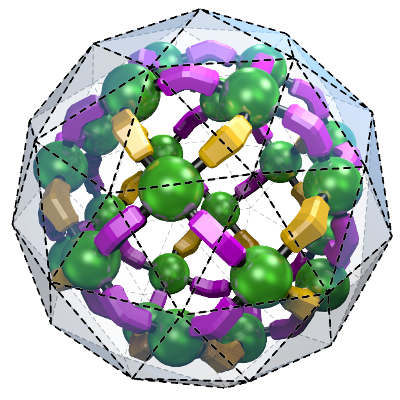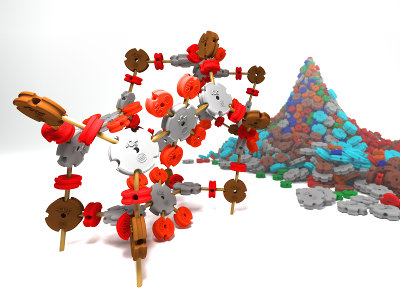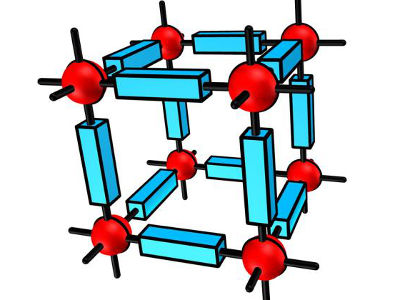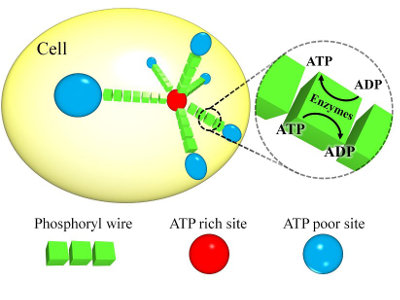Advanced Scientific Visual Communication (ChE 3460)
Spring 2016
This fast-paced course will train students to produce professional scientific visual work, suitable for publications, presentations, and communicating to the public. Advanced topics, such as 3D modeling & animation, handling and visualizing large datasets, interactive displays, and 3D printing will be covered. The course will emphasize the importance of producing high quality artwork in scientific communication. Please bring a laptop and mouse to class (and a keyboard is helpful too).
Specific skills taught:
- 3D modeling, animation, and rendering using Blender
- Regular, photorealistic, and nonphotorealistic (NPR) rendering
- 2D layout and compositing using Inkscape
- Python programming for data handling
- Presentations (advanced)
Course information
- Syllabus (Click to download)
- Wednesday, 2:00-4:20PM
- 938 Benedum Hall
- Prof. Wilmer's office hours: To be determined
Software tools you will need (besides Powerpoint, these are all free and open source):
Supplemental reference material:
There are no expensive textbooks for this course. There are thousands of great (and free) online tutorials, and I will list them here as the course proceeds when needed.




Scientific Grant Proposals
In this course, you pretend that you are helping to create and present a high stakes (i.e., multimillion $$) scientific grant proposal. You can choose from one of the following for grant proposals to work on during the course:
- Application of metal-organic frameworks (MOFs) to capture CO2 from the exhaust of coal power plants
While the best long term solutions to global warming are solar, wind, and possibly nuclear energy, in the short term, carbon capture technology added to coal power plants can significantly help reduce emissions. This research proposal describes the use of highly selective adsorbents called metal-organic frameworks (MOFs) to capture CO2 from the exhaust stream of coal power plants. Preliminary large-scale computational screening data, supported by early experimental adsorption data, support our hypothesis that a Zr-based MOF with a void fraction 80% is optimal for CO2 separation applications.
Department of Energy - Requested amount: $5 million USD
Useful references: (Wilmer et al., 2012) - Investigation of gold/palladium nanoparticle catalysts for water treatment applications
Tricholroethylene (TCE) is a widely used industrial solvent that has been found in alarmingly high concentrations in ground water in major cities. Existing treatment technologies, such as activated carbon filters, are limited in their effectiveness for filtering out TCE. Recent research by Nutt et al. suggest that Pd/Au bimetallic nanoparticles may be effective catalysts for safely converting TCE to ethane, which can be easily separated from water. Here we propose to optimize the nanoparticle shape/size/composition and test their effectiveness on a pilot-scale filtration unit using an activated carbon support.
Environmental Protection Agency - Requested amount: $4.5 million USD
Useful references: (Nutt et al., 2006) - Novel DNA origami-based “mines” for highly selective delivery of anti-cancer drugs
The last decade has demonstrated DNA origami as a robust and highly flexible technique for producing arbitrary 2D and 3D structures at the nanoscale. Recent research by Bechelet et al. demonstrates that DNA origami “nanobots” can sense antigens and release drugs only when the right conditions are met. Here we propose an an array of anti-cancer DNA origami “mines” that can passively circulate in the body until a cancerous cell is detected, and only then do they “detonate” and release the anticancer drugs. Preliminary data on mice has shown that we can achieve arbitrarily precise selectivity by successively adding “locks” onto the mines, which all need to be simultaneously opened (by a prespecified antigen) for the drugs to be released.
National Institutes of Health - Requested amount: $15 million USD
Useful references: (Douglas et al., 20012) - Artificial nose for disease detection via large array of surface-acoustic wave sensors
An increasing number of anecdotal reports exist of animals (and even an elderly woman) being able to detect diseases, such as Parkinson’s disease, by smell. However, these reports are difficult to reproduce as it is unknown how the animals, typically dogs, can be trained to detect disease, and there are nonetheless unreliable diagnoses due to communication difficulties. An artificial nose, implemented via an array of thousands of microscale gas sensors, could potentially achieve the sensitivity and selectivity of a dog’s nose while improving on reliability and analyzability. We propose to computationally design an optimal array of surface-acoustic wave (SAW) sensors and then build a small-scale prototype.
National Science Foundation - Requested amount: $3.5 million USD
Useful references: (Sourface acoustic wave sensor [Wikipedia])
Assignments
- Textbook Figure (Click to download)
- Journal Figure (Click to download)
- Proposal 1 data, MOF structures: IRMOF-1, HKUST-1, ZIF-8, Mg-MOF74
- Proposal 2 data
- Proposal 3 data, Proteins: PDGF (more info), NPY (more info), 1AX8 (more info), ILGF (more info)
- Proposal 4 data
- Cover Art (not assigned yet)
- Movie Project (not assigned yet)
- Presentation (not assigned yet)